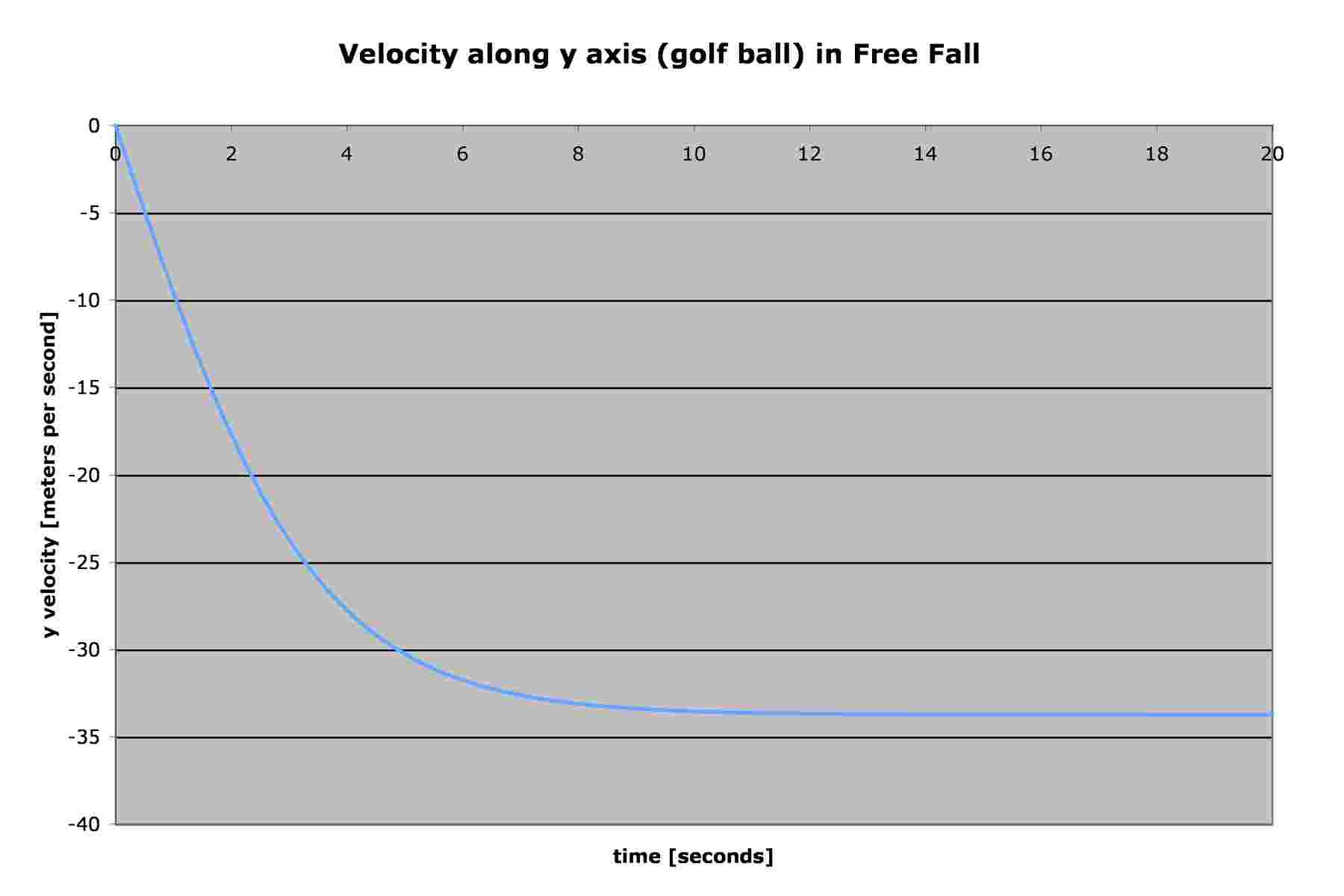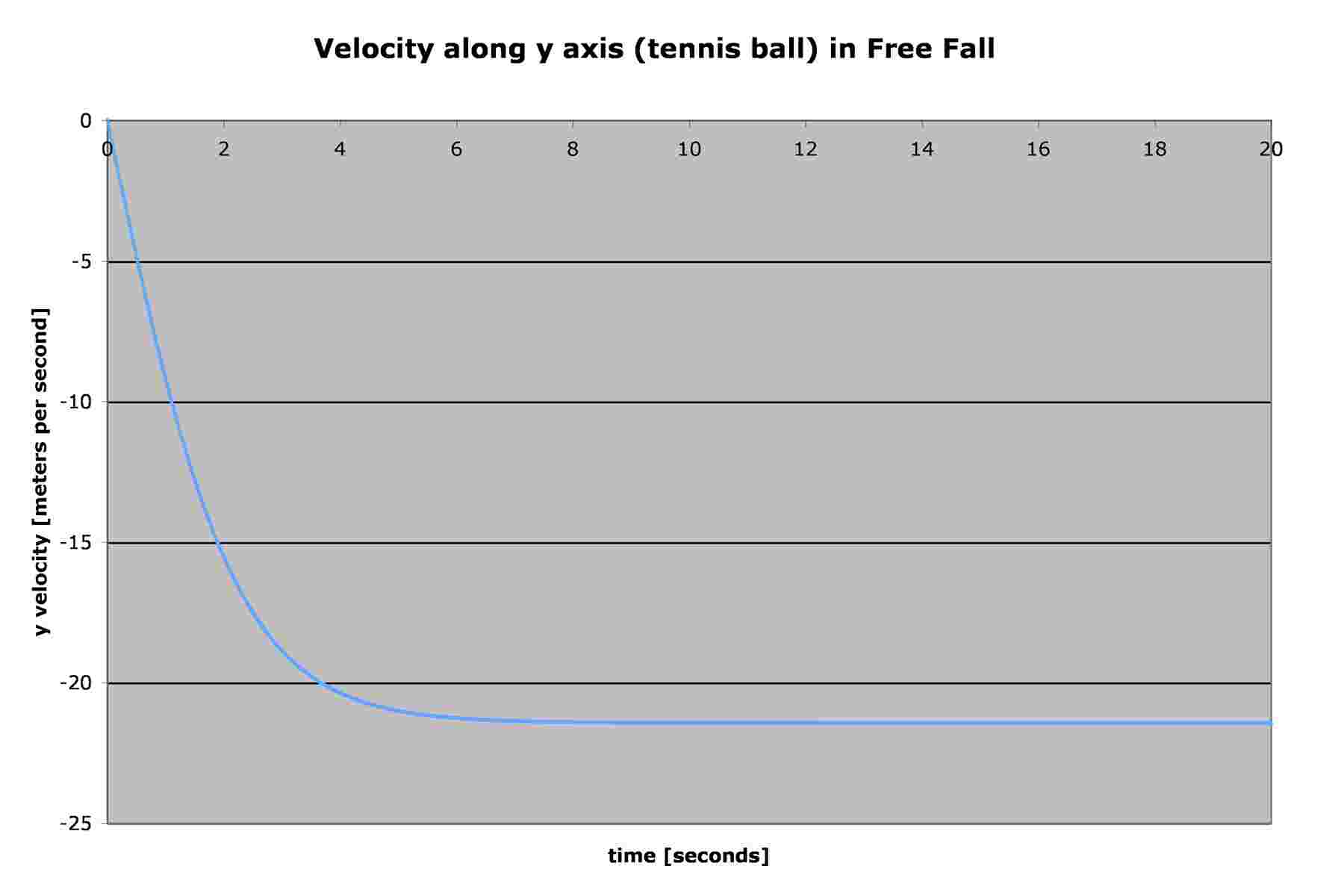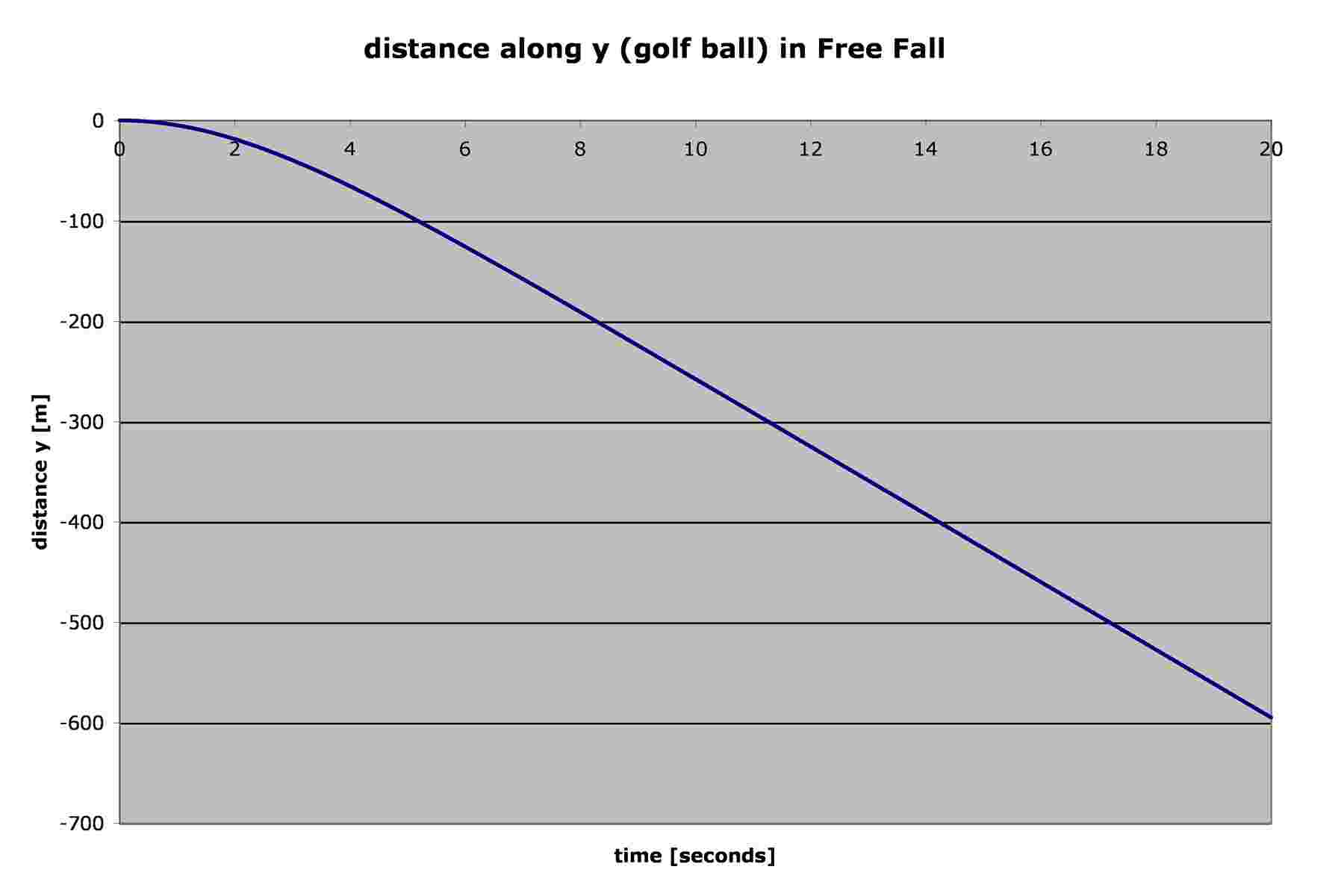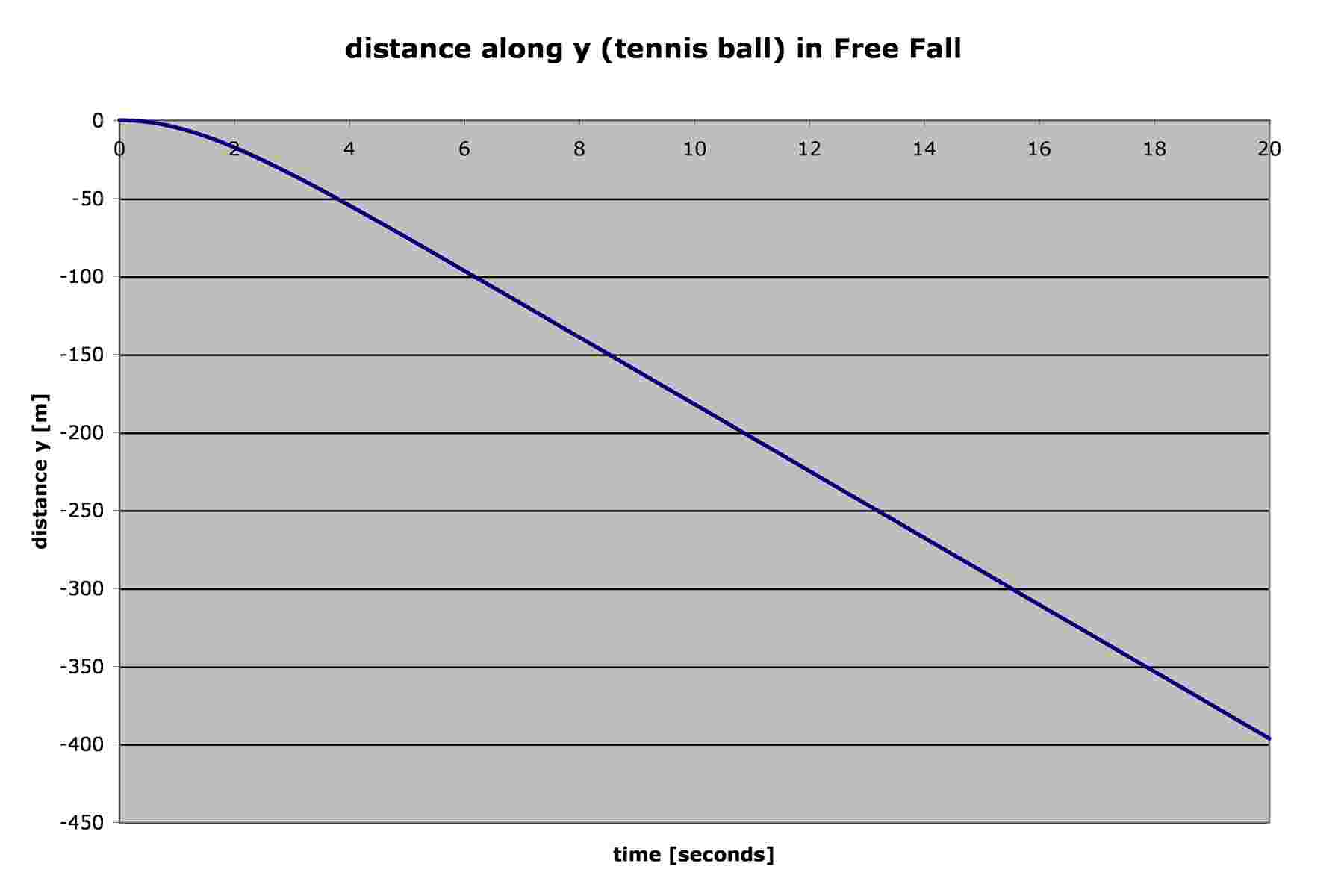
| MadSci Network: Physics |
First, there is some really good information in our archives dealing with the falling of objects in the atmosphere, which you can find by using our search engine to search on "terminal velocity". Among the answers that are listed are these:
I also did a Google search on "terminal velocity" and found these good web pages:
at hyperphysics (This page gives the terminal velocity of a golf ball as 32 m/s.)
aerodynamics of different balls
I also searched for information about tennis balls: (The previous answers have all the information about golf balls.)
Okay, so let's apply some of this information to your question. The
pertinent data on the two types of ball are:
golf ball:
mass: 46 g
diameter: 42.7mm
(resulting density: about 1.13 g/cm3)
tennis ball:
mass: 57 g
diameter: 65mm
(resulting density: about 0.40 g/cm3)
One of the most interesting things about the acoustoscan site is that the generally accepted coefficient of drag for a spherical object does not exactly fit for either a golf ball or a tennis ball! For the golf ball at low velocities Cd is closer to 0.45 , and for a tennis ball at low speeds we should use Cd = 0.6.
To discuss some of the details prior to the balls' obtaining terminal
velocity, one of the previous answers contains
a spreadsheet
that was used to simulate the fall of a golf ball. That spreadsheet can
also be used to simulate the tennis ball simply by changing some of the
data at the top of the spreadsheet. For the golf ball change
Cd
from 0.5 to 0.45. Make a separate copy of the spreadsheet and use the
following data for the tennis ball:
Cd = 0.6
area = 0.0033 m2
mass = 0.057 kg
(Having two copies of the spreadsheet allows you to have both sets of data
open at the same time on the screen, for easy comparison.)
Some readers may not have easy access to Excel, so here are the graphs that are obtained:




If you do that and look closely at the data and the graphs, you may
discover the following:
1) At about 0.1 seconds there isn't much difference between the
distance fallen or the velocity of the two balls. (This will be impossible
to see in the graphs above; an inspection of the data is required.)
2) The time required for the golf ball to fall 10 meters (a reasonable
distance for an experiment) is about 1.45s, while it takes the tennis ball
about 1.48s to fall the same distance. The difference gets even greater
the farther they fall: at 50 meters the golf ball takes about 3.43s while
the tennis ball takes about 3.80s.
3) If, however, you drop the balls in a classroom from a height of only
about 1 meter, the time difference will probably not be detectable by
normal means. In fact, to fall 1 meter the golf ball takes 0.452s while
the tennis ball takes 0.453s, a difference of only about a millisecond.
Also according to the spreadsheet calculations the difference in distance
between the two balls, at a nominal fall of 1 meter and at the same amount
of time, is only about 4 millimeters (about 1/6 inch). You might be able
to detect that difference if your observation skills are very good.
The terminal velocity of a golf ball, using either the calculators or
the spreadsheet, is about 33.8 m/s, while that of the tennis ball is about
21.5 m/s. Clearly the golf ball falls "faster" than the tennis ball.
There are two major reasons why this is so, in summary of all the above
details:
1) The tennis ball is "fuzzy" and thus has a drag coefficient higher
than that of the golf ball.
2) The density of the tennis ball is less than that of the golf ball.
John Link, MadSci Physicist
Try the links in the MadSci Library for more information on Physics.